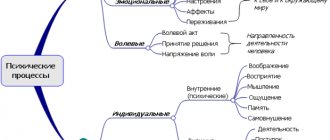2.1. Personal identification.
Personal identification is the process of establishing the identity of a person based on a set of characteristics through their comparative study.
Establishing the identity of a person in most cases means determining his last name, first name, patronymic, year of birth, place of birth and other identifying information that is necessary to uniquely identify the person. Many methods have been developed and used for identification purposes.
— visual identification
The most common method in economic, law enforcement and some other areas of human activity today is the method of identifying an individual using a person’s personal documents, which are designed to confirm the person’s basic identifying data. The main identification document in our country is a passport. If a person shows it or a passport (or a similar document) is found on him, then it is considered that this person is the one whose data is in the passport. To confirm this, a photograph is placed in the passport, which allows, by comparing appearance, to confirm or refute the identity of the passport holder.
— electronic identification
When identifying a person in “electronic form” (Internet, plastic cards, government services in electronic form, electronic and mobile payments, etc.), it is necessary to use an identification number assigned either to the person or to his personal data, which can clearly determine the correspondence of personal data and this man.
Identify a person in the DNA of the DTL laboratory
DNA laboratory in Moscow "DTL" specializes in conducting all types of genetic research based on the use of highly effective technologies. High-tech equipment, modern reagents and primers , as well as many years of successful practice allow us to carry out the most complex types of testing with obtaining the most accurate and reliable results.
Analyzes are carried out on the basis of standard and non-standard samples of biomaterials, which does not affect the result - in any case it will be accurate and reliable. Therefore, if you need a highly accurate examination with the presentation of an official conclusion , please contact our Center or its official representative offices. Each case of contacting us is considered individually, so to clarify the details, we suggest you contact our specialists by phone.
2.2. Identity Policy
Identification of a person (person’s personal data) can be carried out in different ways:
- a single number that cannot be changed throughout your life
- a number that changes due to a change in a person’s data
— use of a set of numbers for identification
The issue of choosing identification methods is of decisive importance for the development of any information system that takes into account the personal data of citizens and other information that gives a person the opportunity to receive any services, both government and commercial.
This must be a very long time?
In the past, genetic identification actually took a long time, since there was only one way to find differences in DNA - restriction analysis.
The restriction enzyme cuts the DNA helix into fragments. And not just anywhere, but only where there is a certain sequence of nucleotides. The length of the cut pieces will vary from person to person. Scientists compare them and determine how similar the material being studied is.
This method requires a lot of good genetic material: fresh blood or tissue. Traces from a toothbrush, dried blood, and especially old corpses are out of the question.
Today, due to the use of PCR, much less biomaterial is needed for genetic identification, and it does not necessarily have to be fresh.
In addition, equipment and reagents are constantly being improved, making the procedure easier and faster. Today, genetic identification results can be obtained within 8–12 hours after submitting the material.
3.1. Single basic information resource
To organize interdepartmental interaction when providing any services to the population electronically, various methods of maintaining resources containing human identification data can be used. The ideal option is to have a single basic information resource. A resource that is primary for any other information resources that contain and accumulate data in the performance of their functions.
In the case of using a single basic information resource, any change in identification data about a citizen causes a change in this data in secondary resources, that is, the information stored in a single basic information resource is the only correct one for all others. This is an ideal situation.
3.2. Basic information resources
During the transition period (before the creation of a single basic information resource), it is permissible to use several basic information resources that have already accumulated a fairly large amount of information about citizens and continue to carry out this accumulation when performing their functions (in Russia these are the FMS, FNM, Pension Fund of the Russian Federation, Rosreestr, Ministry of Internal Affairs and a number of other resources). When using several basic information resources, it becomes necessary to solve a number of rather serious issues:
— definition of basic identifiers
— establishing correspondence of basic identifiers to each other
— identification of primary (master) resources that will serve as a standard for all others
— defining a procedure for correcting errors and introducing changes to the underlying resources if any are detected
If there are a large number of such resources, working with them will be very difficult, as well as the risk of a situation with incorrectly identified personal data of citizens.
Where are these methods used?
https://www.youtube.com/watch?v=ytadvertisede
Primarily in criminology. Samples are collected at the scene that may contain the offender's DNA, such as cigarette butts, drops of blood or hair. The material is then taken to the laboratory and the genetic profile is determined.
When a suspect is detained, their blood or saliva will be taken for testing and a genetic profile will be determined. It will be compared with what was found at the crime scene and with data from the government database, which contains information about the DNA of criminals.
In accordance with Federal Law No. 242-FZ, the database includes genetic profiles of people who have committed serious and especially serious crimes, including rape, as well as biological material found during investigative actions, and profiles of unidentified corpses.
4.1. Identification of citizens
Issues of assigning an identifier to the personal data of citizens must be determined by a regulatory legal act, which must define where, when, by whom the identifier is assigned, by whom it is maintained, where it is stored and how it is applied. If there are several identifiers, the areas of their application and the areas of their contact must be described. Without legal and regulatory reinforcement of these fundamental norms, the process of using basic identifiers is doomed to failure.
Kinds
Among all types of identification, primary and secondary can be distinguished. The first relates to the child's interactions with his mother, with a parent of the same gender as himself. The second implies the child’s connection with those around him. There are other types of identification.
Situational
It manifests itself in adults during meetings, meeting new people, and in children during games with peers. An individual wants to temporarily become like a person who is important to him in a particular situation.
Group
Stable type of identification. An individual adheres to the values, views, beliefs of a certain group of people. He continues to adhere to them even when he is far from the group. Sometimes group identity manifests itself situationally, superficially. The individual does not want to accept the interests and beliefs of the group and considers his own judgments to prevail. When he goes beyond the boundaries of the group, his behavior changes dramatically.
Cultural
Identification of a person with the culture of society. It is important for an individual to find a balance between his inner and outer world. A person must realize his own potential within the framework of the surrounding world and the current laws of society. He must accept the values and norms of the surrounding world.
Social
The individual's perception of himself as an important element of society. He thinks that he is a kind of social agent, feels that he belongs to some social group, feels his importance there, and can speak on behalf of the community members.
Personal
Identification of the individual with himself. He tries to maintain his personal uniqueness in order to stand out from the crowd. Identification is characterized by a unity of views, interests, beliefs, goals, etc. A person can belong to any social group, but the set of personal qualities remains unchanged.
Collectivist
Formed while working in a team. When performing duties together, the problems, experiences, and emotions of one person are transferred to his colleagues. Gradually they become a common motive. This type of identification manifests itself in sympathy and complicity. Members of one team strive to share the failures and successes of other members of the work group.
Sexual
Appears at an early age. The child begins to realize that he belongs to a certain gender. The peak of interest in one's own body is observed at the age of 2–3 years.
Gender
Gender awareness. There are often situations where gender does not coincide with sex. With the help of such an identity, an individual can answer for himself whether he feels like a man or a woman.
4.2. Creation of information (information) resources
After the regulatory and legal consolidation of the basics of identification, it is necessary to determine the basic principles for developing an information system (systems) that allow identification of citizens. This system (systems) must not only ensure the accumulation of information about citizens, but also have the entire infrastructure. Which will allow you to use this information resource, not only in the software part, but also in the technical support. The use of this resource everywhere must presuppose the presence of an extensive data transmission network, access to which must be provided from anywhere in the country (and from other countries as well), all principles of information security must be defined, ensuring protection from unauthorized access both from within and from the outside. In addition, the issues of ensuring sufficient productivity of this information resource must also be resolved, since information exchange with the basic information resource is several orders of magnitude higher than with resources used for any one field of activity.
And how do scientists find these differences?
Scientists don't go through the entire book of DNA - it's time-consuming, expensive and unnecessary, because they only need to find 0.1% differences. Instead, individual pages of DNA are compared - loci in which individual elements are most often found. A certain variant of a page is called an allele.
Microsatellite loci (short tandem repeats - STR) are most often analyzed. These are fragments of DNA with a repeating pattern of nucleotides, such as tgtgtgtgtg or aacaacaac. The nucleotide sequence is the same in all people, but the number of such tg or aac and, accordingly, the length of the locus are different.
If we return to the analogy with literature, it turns out that scientists know on which pages the differences are most often found. They immediately look at the necessary DNA fragments: they compare the same page from the criminal’s book and the book of blood at the crime scene and draw conclusions.










